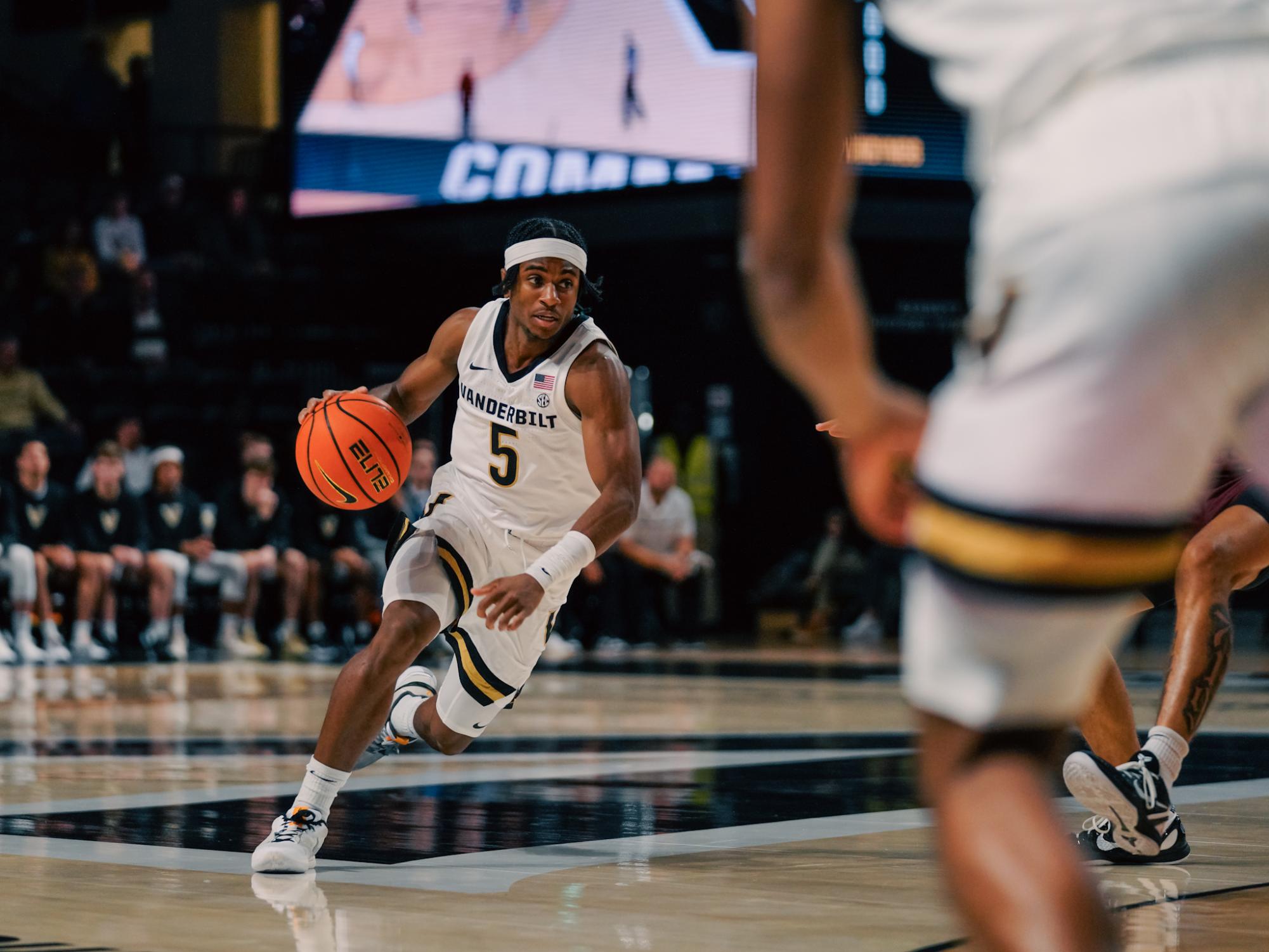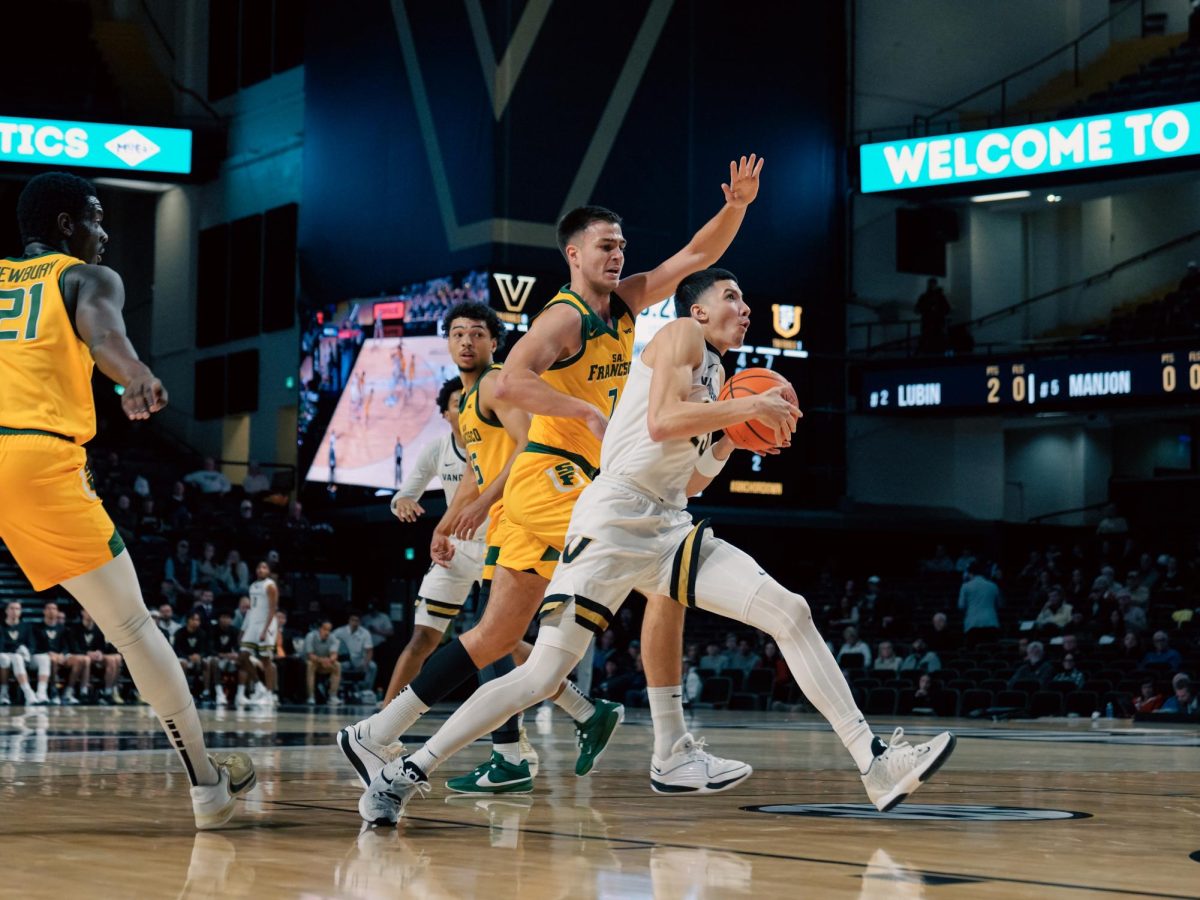I have the pleasure of doing the first SEC Memorial Minutes of the season. Or perhaps, it’s the displeasure. I would’ve liked to analyze a gritty comeback win against Alabama, but the Commodores fell short in matching the No. 1 offense in all of men’s college basketball. Then, they failed to capitalize on a poor shooting night from LSU, trailing by as much as 15 at one point. Finally, they got burnt by an Ole Miss team that shoots the 3 as well as anyone in the NCAA. At one point, the Rebels were 10-of-20 from beyond the arc, ultimately pushing away from Vanderbilt after the Commodores got within three midway through the second half.
So, let’s try to dissect what the issues are for Vanderbilt and what’s next for head coach Jerry Stackhouse:
One-Dimensional ‘Dores
The Commodores have a huge problem offensively. They’re ranked 210th in adjusted offensive efficiency by KenPom, and they have no answers.
First off, size is a major issue. With Lee Dort off the roster, Vanderbilt has no true center. This has been well-documented, but it’s worth noting again that the tallest player on the court for Stackhouse’s group is 6’8”. Quite simply, they can’t match up and they don’t scare anyone in the post.
On top of that, they don’t have a reliable 3-point game. They’re shooting just 29% from deep — that’s 13th in the SEC. Yet, at the same time, they’re recording the sixth-most 3-point attempts in the SEC… see how those numbers don’t match up? Part of this is just a lack of shooting talent, but it also goes back to having no size and no threat down low.
So, where do you go from there? You’re a coach, and you can’t go down low or shoot a 3-pointer. That’s a hard riddle to solve. Vanderbilt’s only solutions have been isolating Jason Rivera-Torres and letting him hoist a prayer or forcing Ezra Manjon to drive and create a kick-out option or a potential layup chance.
Either way, you’re easy to defend and inconsistent. It’s easy to defend drives and pick-and-rolls when you don’t have to defend a 3-pointer, it’s easy to box out when you’re multiple inches taller than every player in Black and Gold and it’s easy to score on a fast break going the other way when the other team averages a whopping 11 turnovers per game.
The offense is tough to watch at times and can’t seem to find an identity other than hoping they have a good night shooting.
Double-edged sword
Don’t be fooled by the title. My double-edged sword is bad on both sides.
“A lot of our offense is causing some of the problems for us on the defensive end,” Stackhouse said. “I don’t know any other way than to watch it on film, continue to come in here and harp on the things that we need to do and for us to kind of submit and find the discipline to do it when it matters the most.”
Basketball is a double-phase game. Your offense affects your defense and vice-versa, so all of these issues I pointed out above about the attacking aspects of the Commodores negatively impact their defense. And their transition defense has been awful. This was most on display in the Alabama game when the Tide’s infamously fast-paced offense scored 15 of its 40 first half points in transition. Unmarked shooters, odd-numbered rushes and open paths to a layup lane plagued the Black and Gold, and ultimately, this type of defense is all about effort and communication.
Who’s got who? Where’s the best shooter? Who’s stopping the ball? Where are the picks coming from?
These are the type of questions that you should hear on the court, but clearly, something is getting lost in translation.
“Every coach would probably tell you they’d like to see the team communicate better,” Stackhouse said. “You want your bigs to be really vocal because they’re the ones calling out defensive coverages and different things like that. So, we have to get better at that — we just don’t really have a loquacious defender out there.”
Vanderbilt was outscored 36-19 in fast-break points during this SEC stretch. Now, this is to be somewhat expected when playing Alabama, but the other portion is the turnovers Vanderbilt committed against LSU (15 to LSU’s 8). Either way, the team has been shooting itself in the foot offensively, and it’s affecting its defense.
Don’t get me wrong, the Commodores have other problems on that side of the court — they’re vulnerable to offensive rebounds due to their size, they’re weak in their pick-and-roll, they need to defend zipper screens better and they simply fail to stop a straightforward drive at times — but to fix one of their most glaring issues on defense, they need to fix their offense (and communication too).
The Stackhouse dilemma
I’d like to give Stackhouse the benefit of the doubt. The Commodores have been unhealthy all season long and don’t have the personnel to be as competitive as they’d like. But, isn’t that also his job? Each year, Vanderbilt has had strong recruiting classes and promising transfers, but it never seems to pan out how Stackhouse intends.
Each year, fans lament the slow starts of this program and slowly watch the team come together and become, at the very least, competent. Sure, Stackhouse adds an “it” factor to recruiting given his name and playing pedigree, but his teams seem to be consistently unprepared. I’ve been on-record saying I think Stackhouse gets another year, but one has to wonder how many times we can have a team that’s “so close” but not quite there before the administration looks in another direction.
As for players, Rivera-Torres has obviously been a bright spot, but the threat of the portal always looms.
“Jason — he’s a shot maker,” Tyrin Lawrence said. “Defensively, he’s got instincts that you can’t teach.”
Other young talents like Colin Smith, Ven-Allen Lubin and Paul Lewis are developing, but it seems like they’ll need a true star or two to be more competitive in the SEC. That will be Stackhouse’s job when the offseason comes. For now, he’ll need to try to fix this offense to fix the defense to fix a team that’s on a steep downward slide.
Vanderbilt faces off against Auburn tomorrow, Jan. 17, at home at 8 p.m. CST.












